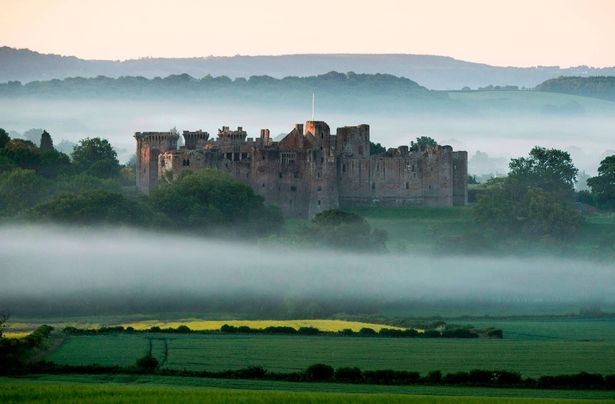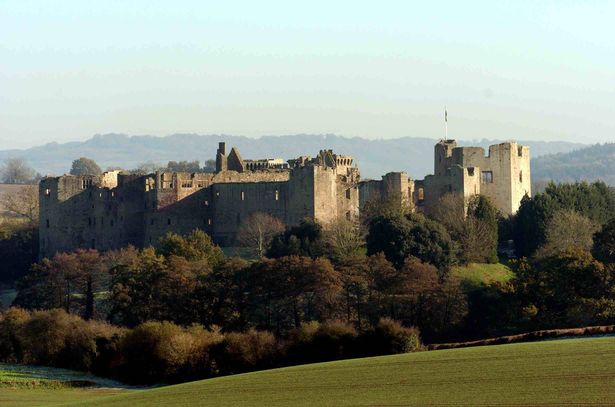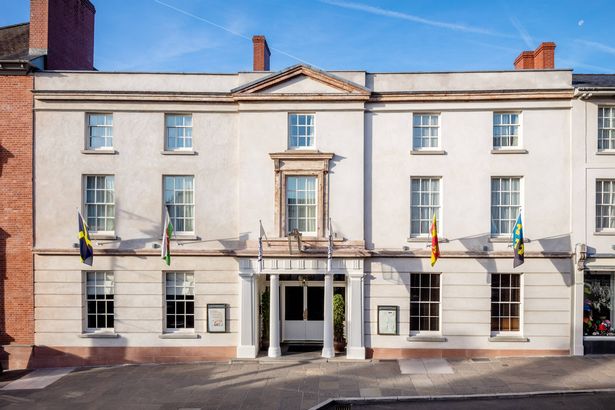It is the grandest castle ever built by Welshmen What’s left of Raglan Castle(Image: © Cadw, Welsh Government (Crown Copyright), all rights reserved.)
What’s left of Raglan Castle(Image: © Cadw, Welsh Government (Crown Copyright), all rights reserved.)
A 45-minute drive from Bristol is one of the ‘grandest castles’ in the country. Wales, often referred to as the “land of castles”, has over 600 fortresses for a historical day out.
One castle that should be on your must-visit list is Castell Rhaglan (Raglan Castle), hailed as the ‘grandest castle ever built by Welshmen’. The castle, located in Monmouthshire, just over the border with Wales, is just a 45-minute drive from Bristol.
Completed in the 16th century, this castle-palace is deemed one of the last true Medieval castles constructed in Wales and is surrounded by rolling countryside.
Cadw, the Welsh Government’s historic environment service, says that Raglan Castle is no ordinary Welsh fortress. Labelling it “the grandest castle ever built by Welshmen,” Raglan Castle holds a unique position in the history of one of England’s most renowned monarchs.
Henry Tudor, who would later become King Henry VII, spent a significant portion of his youth here.
He was sent to live at the castle as a young lad by Sir William Herbert, where he grew up alongside his Welsh relatives. Prior to his coronation, Henry spent his formative years at the castle, raised by Sir William Herbert.
This was more than just an extravagant place to stay; it was here that the future King’s destiny began to take shape, reports Wales Online.
The castle played a pivotal role in shaping Henry’s upbringing, paving the way for his eventual ascent to power, culminating in his triumph at the Battle of Bosworth.
 Completed in the 16th century, this castle-palace is considered one of the last true Medieval castles built in Wales and is surrounded by rolling countryside(Image: Chris Fairweather/Huw Evans Agency)
Completed in the 16th century, this castle-palace is considered one of the last true Medieval castles built in Wales and is surrounded by rolling countryside(Image: Chris Fairweather/Huw Evans Agency)
Raglan Castle also serves as a prime illustration of the evolving nature of castles in the 15th century. It was erected by Sir William ap Thomas, also known as the ‘Blue Knight of Gwent’, and was designed not only for defence but also to impress.
Sir William’s son, Sir William Herbert, further improved the site, introducing the grand gatehouse and the famous ‘machicolations’ stone arches, which were used to shower attackers with missiles.
Though the castle was built later than many medieval fortresses, it was designed with one goal in mind: to show off immense wealth and power.
By the mid-17th century, Raglan had evolved into one of Britain’s most refined country houses, competing with some of the nation’s most opulent estates.
However, its destiny would soon take a dramatic twist with the onset of the English Civil War, a series of internal conflicts that occurred in the UK between supporters of Charles I’s monarchy (and his son and successor, Charles II) and opposing factions in each of Charles’s kingdoms, including Parliamentarians in England, Covenanters in Scotland, and Confederates in Ireland.
The war, which lasted from 1642 to 1651, had a devastating impact on the mighty Raglan Castle. In 1642, the fifth Earl of Worcester sided with King Charles I, providing substantial financial backing to the Royalist cause.
Consequently, Raglan Castle became a target for Parliamentarian forces. The castle endured a prolonged siege during the summer of 1646, but by August, Parliament’s forces were within striking distance.
 Raglan Castle in Monmouthshire(Image: Wales Online )
Raglan Castle in Monmouthshire(Image: Wales Online )
After months of fighting, the castle’s defenders finally surrendered on 19th August 1646. Following its capture, Raglan Castle was subjected to a process known as ‘slighting’, in which key parts of the structure were deliberately destroyed to render it useless for future defence.
Regrettably, the Great Tower suffered severe damage, with a large hole ripped through its core. Over time, the formidable castle deteriorated, its stonework gradually crumbling.
It was even plundered for construction materials, and sections of the site were deserted.
However, Raglan wasn’t allowed to disintegrate into total ruin. In the 20th century, Cadw and its predecessors initiated efforts to conserve and safeguard the site.
Owing to these preservation endeavours, the castle continues to provide an intriguing glimpse into Welsh history and medieval architecture. A family ticket to explore these magnificent remains is priced at £33.60.
In stark contrast to the ruined castle, the gardens are meticulously maintained, offering you the chance to enjoy a picturesque walk amidst the historical landscape. Being on top of the ridge where the castle is, you’ll be have panoramic views of the surrounding countryside, perfect for a post-castle picnic.
 Ruins of the famous Raglan Castle(Image: Nicolas McComber)What else is there to do in the area?
Ruins of the famous Raglan Castle(Image: Nicolas McComber)What else is there to do in the area?
There are also numerous countryside walks near the castle and the village of Raglan. Download the AllTrails app for nearby routes, which you can navigate directly from your phone.
A leisurely circular route around Monmouth encompasses the historic Monmouth Castle, the picturesque Kymin viewpoint and a tranquil stretch of the River Wye. For a more extended riverside escapade, you can trace the path from Monmouth right to the breathtaking viewpoint at Symonds Yat.
In Abergavenny, there’s a delightful circular walk around the Castle Meadows and through the vibrant Linda Vista Gardens. If you’re up for a bit more of a challenge, the Sugarloaf Walk commences from the town and ascends all the way to the summit of Sugarloaf Mountain.
Another rewarding ascent is Skirrid Fawr, a 486-metre peak in Bannau Brycheiniog boasting impressive views from the top.
There are also numerous attractions and places to visit near the castle, including Raglan Farm Park and The Dell Vineyard, a small, family-run vineyard near Raglan that sells award-winning wine.
![]() There are also plenty of countryside walks near the castle and the village of Raglan(Image: Getty Images)Abergavenny
There are also plenty of countryside walks near the castle and the village of Raglan(Image: Getty Images)Abergavenny
After your castle tour, why not pop over to nearby Abergavenny, the ‘Gateway to Wales’, for lunch and a spot of shopping?
And, rated as Wales’ ‘best place to live’ by The Sunday Times in 2024.
This bustling market town is known as a foodie haven, with the artisan Angel Bakery and The Walnut Tree Inn, a popular Michelin-starred restaurant with cottages led by legendary chef Shaun Hill.
The town also houses The Angel Hotel, named the ‘Best foodie hotel’ on the Sunday Times list of 100 Best Places to Stay in the UK for 2025.
 Originally a coaching inn on the London to Fishguard route, this foodie Georgian hotel is right in the middle of Abergavenny.(Image: Keith Davies 2018)
Originally a coaching inn on the London to Fishguard route, this foodie Georgian hotel is right in the middle of Abergavenny.(Image: Keith Davies 2018)
This luxurious 4-Silver-Star establishment, which originated as an 18th-century coaching inn, has previously been awarded the AA Hotel of the Year for Wales. It’s now a thriving hotel renowned for its exceptional cuisine.
Cadw members are in for a treat; they get free entry to the castle. Otherwise, you can purchase your admission tickets upon arrival or book online to save 5%.
If you rely on public transport, a bus stop in Raglan Village is just a 10-minute walk or push to the castle. Heads up, though – you’ll need to cross a busy dual carriageway and navigate a steep lane with no pavements, so it’s a bit of a trek.
The closest train station is Abergavenny, about 9 miles away. However, if you’re driving, there’s a free car park for visitors with a slight incline up to the visitor centre entrance.
